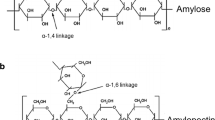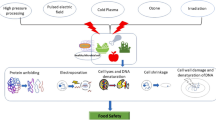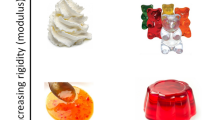Abstract
Meat shrinks and assumes an irregular shape during heating due to the varying distribution of connective tissue and extracellular spaces. The terrestrial 3D laser scanning technology is proposed as an alternative method to manual measurements to estimate the volume of irregularly shaped meat cuboids and to predict the cooking loss based on the heating induced volume shrinkage. Cuboids from aged pork loins (longissimus lumborum, n = 12) were heated at 50, 60, 70 or 80 °C for 30 min. Two methods of 3D reconstruction and volume estimation of the pork cuboids by laser scanning were used; without a base scan (laser-B) and with inclusion of a base scan (laser+B), as well as two methods based on manual caliper measurements of all twelve edges (caliper-12) or of three edges in each direction (caliper-3). Both laser scanning methods (Laser+B and Laser-B) resulted in greater volume estimates for the raw samples than the caliper-12 and caliper-3 measurements (38.3, 39.4 compared to 33.9, 34.8 cm3, respectively). Cooking loss across the different temperatures could be best predicted by the caliper-based perimeter shrinkage (r = 0.94, P < 0.001), followed by the caliper-based volume shrinkage estimates (r = 0.67 and 0.64 for caliper-12 and caliper-3, respectively, p < 0.001), while volume shrinkage measured by laser scanning had low (laser-B, r = 0.35, P < 0.05) or no correlation (laser+B, r = 0.17, P > 0.05) with the cooking loss. 3D laser scanning technologies can be considered by the food industry for 3D reconstruction and volume estimation, however improvements are needed in the data processing to allow for better predictability of meat quality attributes.





Similar content being viewed by others
References
Aaslyng, M., Bejerholm, C., Ertbjerg, P., Bertram, H. C., & Andersen, H. J. (2003). Cooking loss and juiciness of pork in relation to raw meat quality and cooking procedure. Food Quality and Preference, 14(4), 277–288.
Aaslyng, M., Oksama, M., Olsen, E., Bejerholm, C., Baltzer, M., Andersen, G., Bredie, W. L. P., Byrne, D. V., & Gabrielsen, G. (2007). The impact of sensory quality of pork on consumer preference. Meat Science, 76(1), 61–73.
Agudelo-Laverde, L. M., Schebor, C., & del Pilar Buera, M. (2014). Evaluation of structural shrinkage on freeze-dried fruits by image analysis: Effect of relative humidity and heat treatment. Food and Bioprocess Technology, 7(9), 2618–2626.
Aversa, M., Curcio, S., Calabrò, V., & Iorio, G. (2012). Experimental evaluation of quality parameters during drying of carrot samples. Food and Bioprocess Technology, 5(1), 118–129.
Barbera, S., & Tassone, S. (2006). Meat cooking shrinkage: Measurement of a new meat quality parameter. Meat Science, 73(3), 467–474.
Bernstein, A., & Noreña, C. P. Z. (2014). Study of thermodynamic, structural, and quality properties of yacon (Smallanthus sonchifolius) during drying. Food and Bioprocess Technology, 7(1), 148–160.
Bryhni, E. A., Byrne, D. V., Rødbotten, M., Møller, S., Claudi-Magnussen, C., Karlsson, A., Agerhem, H., Johansson, M., & Martens, M. (2003). Consumer and sensory investigations in relation to physical/chemical aspects of cooked pork in Scandinavia. Meat Science, 65(2), 737–748.
Channon, H. A., D'Souza, D. N., & Dunshea, F. R. (2016). Developing a cuts-based system to improve consumer acceptability of pork: Impact of gender, ageing period, endpoint temperature and cooking method. Meat Science, 121, 216–227.
Clemente, G., Bon, J., Sanjuán, N., & Mulet, A. (2009). Determination of shrinkage function for pork meat drying. Drying Technology, 27(1), 143–148.
Diamant, R., Watts, B. M., & Cliplef, R. L. (1976). Consumer criteria for pork related to sensory, physical and descriptive attributes. Canadian Institute of Food Science and Technology Journal, 9(3), 151–154.
Du, C., & Sun, D. -W. (2005). Correlating shrinkage with yield, water content and texture of pork ham by computer vision. Journal of Food Process Engineering, 28(3), 219–232.
Du, C., Iqbal, A., & Sun, D. -W. (2016). Chapter 8 - quality measurement of cooked meats. In D.-W. Sun (Ed.), Computer vision Technology for Food Quality Evaluation (Second ed., pp. 195–212). San Diego: Academic Press.
Faro Technologies (2013). User manual for the Focus3D 20/120 and S 20/120. https://faro.app.box.com/s/kfpwjofogeegocr7mf2s866s2qalnaqw Accessed 13 Dec 2018.
Förstner, W., & Khoshelham, K. (2017). Efficient and accurate registration of point clouds with plane to plane correspondences. Presentation at the Computer Vision Workshop (ICCVW), 2017 IEEE international conference on computer vision and pattern recognition, Honolulu, Hawaii, United States.
Friedli, M., Kirchgessner, N., Grieder, C., Liebisch, F., Mannale, M., & Walter, A. (2016). Terrestrial 3D laser scanning to track the increase in canopy height of both monocot and dicot crop species under field conditions. Plant Methods, 12(1), 9.
Giavarina, D. (2015). Understanding bland Altman analysis. Biochemia Medica, 25(2), 141–151.
Igathinathane, C., Davis, J., Purswell, J., & Columbus, E. (2010). Application of 3D scanned imaging methodology for volume, surface area, and envelope density evaluation of densified biomass. Bioresource Technology, 101(11), 4220–4227.
Kirtil, E., & Oztop, M. H. (2016). 1 H nuclear magnetic resonance relaxometry and magnetic resonance imaging and applications in food science and processing. Food Engineering Reviews, 8(1), 1–22.
Kondjoyan, A., Oillic, S., Portanguen, S., & Gros, J.-B. (2013). Combined heat transfer and kinetic models to predict cooking loss during heat treatment of beef meat. Meat Science, 95(2), 336–344.
Lepetit, J. (2008). Collagen contribution to meat toughness: Theoretical aspects. Meat Science, 80(4), 960–967.
Li, C., Zhou, G., & Xu, X. (2010). Dynamical changes of beef intramuscular connective tissue and muscle fiber during heating and their effects on beef shear force. Food and Bioprocess Technology, 3(4), 521–527.
Li, B., Wei, J., Wang, L., Ma, B., & Xu, M. (2019). A comparative analysis of two point cloud volume calculation methods. International Journal of Remote Sensing, 40(8), 3227–3246.
Lumme, J., Karjalainen, M., Kaartinen, H., Kukko, A., Hyyppä, J., Hyyppä, H., Jaakkola, A., & Kreemola, J. (2008). Terrestrial laser scanning of agricultural crops. The International Archives of the Photogrammetry, Remote Sensing and Spatial Information Sciences, 37(B5), 563–566.
Márquez, C., & De Michelis, A. (2009). Comparison of drying kinetics for small fruits with and without particle shrinkage considerations. Food and Bioprocess Technology, 4(7), 1212–1218.
Moscetti, R., Saeys, W., Keresztes, J. C., Goodarzi, M., Cecchini, M., Danilo, M., & Massantini, R. (2015). Hazelnut quality sorting using high dynamic range short-wave infrared hyperspectral imaging. Food and Bioprocess Technology, 8(7), 1593–1604.
Ngapo, T., Dransfield, E., Martin, J.-F., Magnusson, M., Bredahl, L., & Nute, G. (2004). Consumer perceptions: Pork and pig production. Insights from France, England, Sweden and Denmark. Meat Science, 66(1), 125–134.
Offer, G., & Trinick, J. (1983). On the mechanism of water holding in meat: The swelling and shrinking of myofibrils. Meat Science, 8(4), 245–281.
O'Mahony, R., Cowan, C., & Keane, M. (1991). Consumer preferences for pork chops with different levels of intramuscular fat. Food Quality and Preference, 3(4), 229–234.
Paulus, S., Schumann, H., Kuhlmann, H., & Léon, J. (2014). High-precision laser scanning system for capturing 3D plant architecture and analysing growth of cereal plants. Biosystems Engineering, 121, 1–11.
Purslow, P., Oiseth, S., Hughes, J., & Warner, R. D. (2016). The structural basis of cooking loss in beef: Variations with temperature and ageing. Food Research International, 89(part 1), 739–748.
Sanders, D. R., Wanki, M., & Kuethe, T. H. (2007). Consumer willingness-to-pay for fresh pork attribute. Journal of Agribusiness, 25(2), 163–179.
Schoeman, L., Williams, P., du Plessis, A., & Manley, M. (2016). X-ray micro-computed tomography (μCT) for non-destructive characterisation of food microstructure. Trends in Food Science & Technology, 47, 10–24.
Siripon, K., Tansakul, A., & Mittal, G. S. (2007). Heat transfer modeling of chicken cooking in hot water. Food Research International, 40(7), 923–930.
Tello, J., Cubero, S., Blasco, J., Tardaguila, J., Aleixos, N., & Ibáñez, J. (2016). Application of 2D and 3D image technologies to characterise morphological attributes of grapevine clusters. Journal of the Science of Food and Agriculture, 96(13), 4575–4583.
Tilly, N., Hoffmeister, D., Liang, H., Cao, Q., Liu, Y., Lenz-Wiedemann, V., Miao, Y., & Bareth, G. (2012). Evaluation of terrestrial laser scanning for rice growth monitoring. The International Archives of the Photogrammetry, Remote Sensing and Spatial Information Sciences, 39, B7.
Tornberg, E. (2005). Effects of heat on meat proteins–implications on structure and quality of meat products. Meat Science, 70(3), 493–508.
Uyar, R., & Erdoğdu, F. (2009). Potential use of 3-dimensional scanners for food process modeling. Journal of Food Engineering, 93(3), 337–343.
Verbeke, W., Demey, V., Bosmans, W., & Viaene, J. (2005). Consumer versus producer expectations and motivations related to “superior” quality meat: Qualitative research findings. Journal of Food Products Marketing, 11(3), 27–41.
Warner, R., McDonnell, C. K., Bekhit, A., Claus, J., Vaskoska, R., Sikes, A., Dunshea, F. R., & Ha, M. (2017). Systematic review of emerging and innovative technologies for meat tenderisation. Meat Science, 132, 72–89.
Zheng, C., Sun, D.-W., & Zheng, L. (2007). Predicting shrinkage of ellipsoid beef joints as affected by water immersion cooking using image analysis and neural network. Journal of Food Engineering, 79(4), 1243–1249.
Acknowledgments
R. Vaskoska acknowledges an Australian Government Research Training Program (RTP) Scholarship.
Funding
No funding received for the research.
Author information
Authors and Affiliations
Corresponding author
Ethics declarations
Conflict of Interest
The authors declare that they have no conflict of interest.
Additional information
Publisher’s Note
Springer Nature remains neutral with regard to jurisdictional claims in published maps and institutional affiliations.
Rights and permissions
About this article
Cite this article
Vaskoska, R., Ha, M., Tran, H.T.T. et al. Evaluation of 3D Laser Scanning for Estimation of Heating-Induced Volume Shrinkage and Prediction of Cooking Loss of Pork Cuboids Compared to Manual Measurements. Food Bioprocess Technol 13, 938–947 (2020). https://doi.org/10.1007/s11947-020-02421-0
Received:
Accepted:
Published:
Issue Date:
DOI: https://doi.org/10.1007/s11947-020-02421-0




